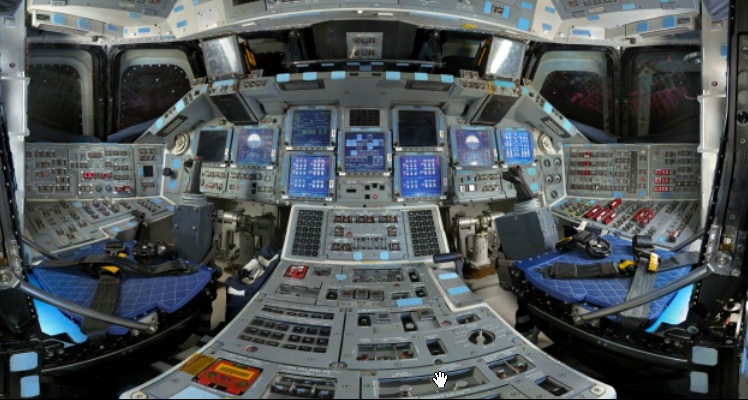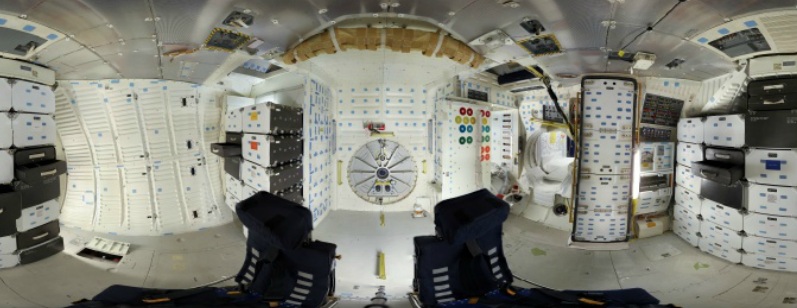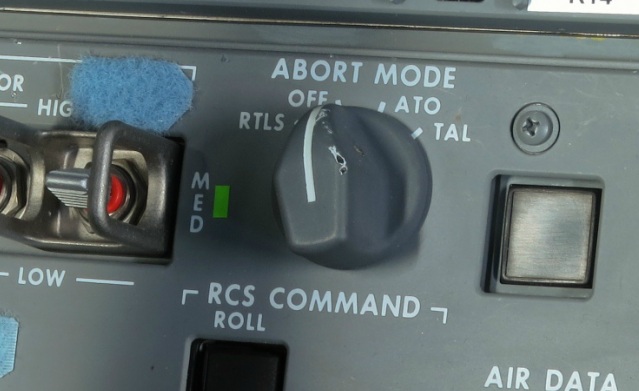Explore NASA’s Space Shuttle ‘Discovery’ In Stunning 2.74-Gigapixel 360° Panoramics

Launched by NASA in 1984 and taking part in milestone NASA missions thereafter – including deploying the Hubble Space Telescope in April 1990, and the Upper Atmosphere Research Satellite (UARS) in September 1991 – space shuttle Discovery today makes its final flight, atop a jumbo jet on its way to its new permanent home, to its final resting place the Smithsonian Institution. Now, the National Geographic is giving an all-too rare look inside the heat-proof shell of the craft, publishing online interactive ultra-high resolution, 360-degree pictures of the retired orbiter.
Made possible following the decision by NASA and the United Space Alliance to grant news organisations with ‘unprecedented’ access to each of the spacecraft following its respective final shuttle flight, National Geographic’s remarkable 360° images from the Discovery come in at a staggering 2.74-gigapixels – which the National Geographic highlights is around 340 pictures(!) taken with the iPhone’s in-built camera - and are fully zoomable. In all, the team behind the shoot created 27 'gigapans', with everything from the flight deck, to the air locks and toilets being put in front of the lens for our interactive viewing pleasure.

Coincidentally, the technology behind the 360-degree, 2.74-gigapixel panoramic, GigaPan, was originally developed for NASA itself for its Mars rovers and uses a camera-ready robot and image-stitching software to create the magnificent wraparound stills.
The detail afforded is, quite frankly, insanely good. Just take a look for yourself, try zooming into  individual switches, dials and knobs; reading in stunning clarity the data presented by the array of CRT monitors aboard; notice the Discovery’s unfamiliar beige paneling that was provided by the Russian Space Agency and, as NG explains, had NASA having to find “workarounds” to get the system to function due to its components’ poor compliance with the orbiter’s existing systems.
individual switches, dials and knobs; reading in stunning clarity the data presented by the array of CRT monitors aboard; notice the Discovery’s unfamiliar beige paneling that was provided by the Russian Space Agency and, as NG explains, had NASA having to find “workarounds” to get the system to function due to its components’ poor compliance with the orbiter’s existing systems.
“Pictures like this give you insight into just how complex it is to operate a vehicle that travels in space and pull of a manned space program,” said former NASA astronaut Scott “Doc” Horowitz. Funny, it looks just like riding a bike...
Richard Birkett
Source: National Geographic

